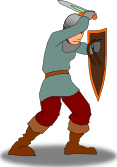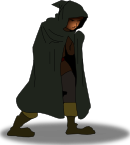Mano a Mano:Character Creation
Contents
Character Creation
To create a character, you need a pencil and a character sheet. You also need to know your Character Point allowance and what templates you can use. Character Point allowance and template selection depend on the specific game being played. Usually one player (the "Game Master") will tell the other players to create characters with a certain Character Point allowance from a list of templates.
|
||||||||||||||||||||||||||||||||||||||||||||||||||||||||||||||||||||||||||||||||||||||||||||||||||||||||||||||||||||||||||||||||||||||||||||||||||||||||||||
|
| |||||||||||||||||||||||||||||||||||||||||||||||||||||||||||||||||||||||||||||||||||||||||||||||||||||||||||||||||||||||||||||||||||||||||||||||||||||||||||
| ||||||||||||||||||||||||||||||||||||||||||||||||||||||||||||||||||||||||||||||||||||||||||||||||||||||||||||||||||||||||||||||||||||||||||||||||||||||||||||
| ||||||||||||||||||||||||||||||||||||||||||||||||||||||||||||||||||||||||||||||||||||||||||||||||||||||||||||||||||||||||||||||||||||||||||||||||||||||||||||
| ||||||||||||||||||||||||||||||||||||||||||||||||||||||||||||||||||||||||||||||||||||||||||||||||||||||||||||||||||||||||||||||||||||||||||||||||||||||||||||
Choose a Template
The selection of Templates depends on the game you are playing. Select a Template with a CP no greater than your Character Point allowance. Subtract the CP of the template from your Character Point allowance. Copy the features of the Template to the Character Sheet in pencil:
- Copy the template's average Length and Stride
- Copy the template's Abilities and Ability Levels
- Copy the template's Mass, Reach, Agility, Power and Absorption to the "Body" line of the Equipment ("Equip.") list.
- Copy the template's Natural Weapons and Armor to the Equipment ("Equip.") list.
- Add the character's Power modifier to his Natural Weapon power modifier.
Customize the Character
Select abilities and modifiers from the following options. The total CP of these changes may not be more than your remaining Character Point allowance (See Character Points/Character CP.)
- Give the character new Abilities and Disabilities.
- Ability Levels (added to the template ability level if the template already has the ability.)
- If so desired, change the character's Build, adjusting Agility, Power and Absorption if needed (See Character CP/Body.)
- The character could be missing natural Limbs listed on the template.
Update the character sheet:
- Combat Modifier (Cmb) - Agility + the appropriate ability bonus for that weapon in the case of a hand to hand weapon. In the case of projectile weapons, use only the appropriate ability bonus for that weapon. List the character's Agility in the "Cmb" column of the "Body" line of the character's Equipment ("Equip.") list.
- Encumbrance (Enc) - Encumbrance is the mass of the character's equipment, divided by the character's CC, rounded down. For example, if the character's CC is 10, and his total equipment mass is 29, his encumberance is 2. (29/10 = 2.9, rounded down = 2.) Obviously this is 0 when the character doesn't have any equipment. Encumbrance is the number of hit points the character must keep in his "other used hit point pool" in order to continue using all of his equipment.
Occupations
Occupations describe what a character does: how the character makes a living and fits into society. Sometimes occupations are professions, careers, jobs or businesses, but volunteer work, hobbies and even crime can also be occupations. An occupation should include a description, at least one advantage and at least one requirement. Occupations can also have liabilities: effects which are not advantages. A game's list of occupations should balance the advantages and requirements of each occupation. Occupations can provide character development opportunities during the game. Characters can change occupations and have more than one occupation at the same time, as long as they meet the occupation's requirements and the game or GM allows it.
Description
Give the name of the occupation, what it's practitioners are called, and special terms for the occupation's activities. Explain what characters do in this occupation. Indicate the setting, culture, communities, nations, or worlds where this occupation is found, and how the occupation relates to them. Describe the organization of the profession: societies, traditions, rituals, competition, initiation, apprenticeships, status, reputation, etc. Explain how characters training for this occupation develop the requirements.
Requirements
Most occupations require minimum ability modifiers in one or more specific abilities. This reflects the training and education required by the occupation. An occupation may also require the character to have another occupation, or to have had that occupation in the past. This may indicate professional experience or rank. Occupations might require other specific accomplishments - things the character must do before acquiring the occupation. For example, a character might have to win a competition, or spend a certain amount of money.
Opportunities to acquire the occupation can be limited. Some occupations require the character to be elected or appointed. If there are a strictly limited number of positions available, a character may be unable to acquire the occupation until there is a vacancy. For example, a kingdom usually has only one king at a time.
Occupations might discriminate against certain types of characters. The occupation may not be allowed for characters of a particular template, sex, age, culture, social class or political alignment. If the occupation is allowed but significantly less compatible or popular with certain types of characters, explain why. (Or explain why the occupation is particularly popular or compatible with certain types of characters.) The occupation might also depend on the character's social connections, reputation or popularity, or the occupation might only be available as an inherited position.
Advantages
The advantages of having an occupation can include income, opportunities, status and privileges. An occupation can also improve or hurt a character's reputation. A better reputation is an advantage, but a worse reputation is a liability. The list of equipment required by an occupation is considered an advantage. When a character acquires the occupation, they receive this equipment if they don't already have it. An occupation's equipment list will often include multiple choices. If the character must invest a substantial amount of their own money to get this equipment, that cost might be a requirement of the occupation.
Liabilities
Occupations can require time commitments. They may limit how many other occupations the character can have. An occupation may even prevent the character from having any other occupations. Occupations can include duties which require a character to do certain things. An occupation can have standards of conduct and penalties for not keeping the occupation's rules. A character's reputation can be adversely affected by an unpopular or notorious occupation.
Occupation Examples
In this example each item is worth it's CP value in small silver coins.
If a character meets both of these occupation's requirements they may begin as either a Robber or Knight. If this character begins as a Robber, but gains the reputation of being a hero who is loyal to the king, and if he ceases to take advantage of his robber privileges, the King may choose to give this character the occupation of Knight. If this character begins as a knight, but proves himself disloyal to the king by participating in unlawful activity, he has the option of becoming a Robber, but loses all of his Knight privileges.
Consider two characters who are identical except that one character is a Knight and the other character is a Robber. The Knight has an advantage over the Robber, but the Knight also has stricter requirements.

